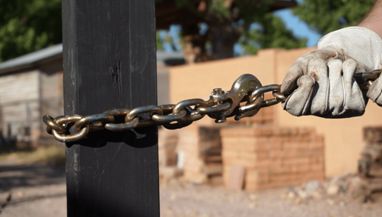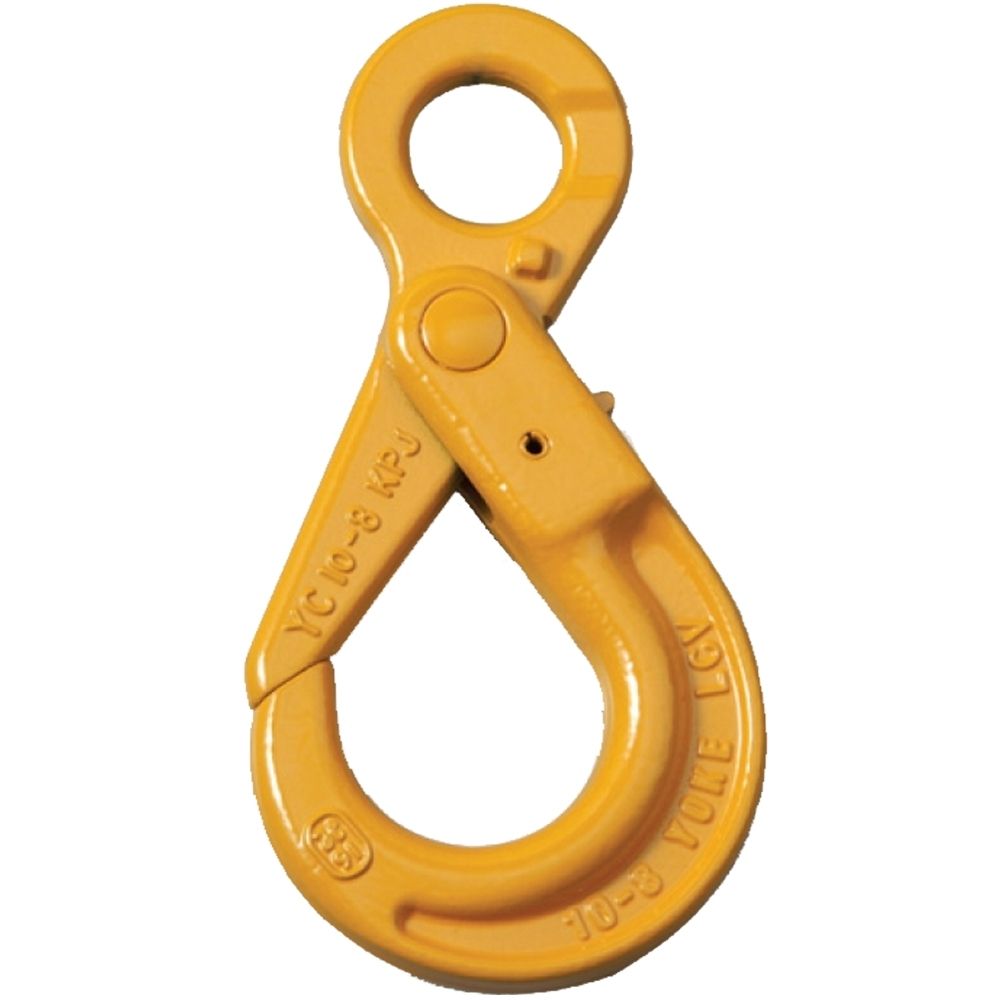1410, PARKSON, 44-60 ZHONGSHAN ROAD, QINGDAO, CHINA
Types of Rigging Hooks
Grab hook
Designed to "grab" to keep a chain from slipping off the hook.
What is a Grab Hook?
There are many types of hooks with chains, but a grab hook in particular will look like this:

It’ll have thick beefy sides and, critically, the opening in the middle will have straight sides and there is a consistent width from the top to the bottom.
The grab hook will have a specific size stamped on it — in this case, 5/16″.
It is worth noting that the width of the slot in the hook will be just a tiny bit wider than the stamped size. That’s the key to how this works.
The Proper Way
The consistent width of the slot in the hook is critical to all of this, because it will be just a hair wider than the thickness of the chain. That is on purpose. The entire chain link is intended to be slide into that slot.
Step 1: Position the hook over a link so that the hook is perpendicular to the link
Step 2: Slide the hook down onto the link
The chain fits into the slot in the hook like it was made for it (because it was). Each side of the link is well supported by the hook.
When in use, the sides of the hook presses against the sides of the attached links, which spreads out the load quite a bit.

When used this way, the full weight rating of the chain is in play. It’s much safer when used properly and even easier to use.
Slip hook
Generally had a wider throat than grab hooks and sometimes has a latch design to keep an attached object in its place.

Clevis hook
Designed with a clevis and bolt or pin at the base to create a secure way to fasten the hook to a bracket or chain.

Self locking hook
Self-Locking Hooks are the most common style of bottom hook used on chain slings. The hook design ensure the hook will close when loaded and thus the load is captured in the hook and is not able to release should the load line become slack or into contact with another object.

Care should be exercised during use, so the overhead crane hook is not abused or damaged.
Do not exceed the working load limit or shock load the chain or attachments. Loads applied rapidly or dropped freely can result in serious overloading of the hook.
Hooks should not be subjected to bending, exposed to sharp objects or tip loaded (unless specified by the manufacturer) or loaded in a manner inconsistent with its design.
Hooks attached to the chain should be selected to match the size and working load limit of the chain.
Avoid exposure to corrosive mediums or high temperatures that could affect the thermal treatment and strength of the hook. Hooks can be used from -40 degrees F to 400 degrees F without reduction of working load limit.
When rigging and lifting a load, it is important the hook is correctly positioned where the weight of the object listed is applied in the bowl or saddle of the hook. Side, back and or tip loading are conditions that reduce the hook's lifting capacity and can cause damage to the hook.

Determine that the weight of the load to be lifted does not exceed the load rating of the hook.
Avoid shock loading
Center the load in the base (bowl or saddle) of the hook to prevent point loading of the hook. Do not place a side or back load on the hook.
When using a device to bridge the throat opening of the hook, ensure that no portion of the load is carried by the bridging device.
Keep hands and fingers from between the hook and the load.
Load duplex (sister) hooks equally on both sides, unless the hook is specifically designed for single loading.
Do not load the pinhole in duplex (sister) hooks beyond the rated load of the hook.
Rigging Hook Inspection and Maintenance

Discard rigging hooks that are worn more than 10% of the original dimension or are worn beyond a specific dimension or tolerance as provided in a wear allowance table, chart or diagram.
Discard hooks that have an increase in throat or slot opening more than 5% of the original opening (not to exceed 1/4 inch).
Discard hooks with any visibly apparent bend or twist from the plane of the unbent hook. Replace load pins that are permanently distorted.
Replacement parts, such as load pins for clevis hooks, should be equal to the original manufacturer’s specifications and obtained from the manufacturer of the hook.
A safety hook latch that is inoperative or missing shall be repaired or replaced. If a hook has a latch that does not bridge the throat opening, remove it from service until the latch is replaced or repaired and the hook is examined for deformation with special attention to the throat opening.
A designated person shall repair cracks, nicks, and gouges by grinding longitudinally, following the contour of the hook, provided no dimension is reduced more than 10 percent (or as recommended by the manufacturer) of its original value. All other repairs shall be performed by the manufacturer or a qualified person.
Find more information about Rigging Hook :
https://www.huahanmachinery.com/hook01.html